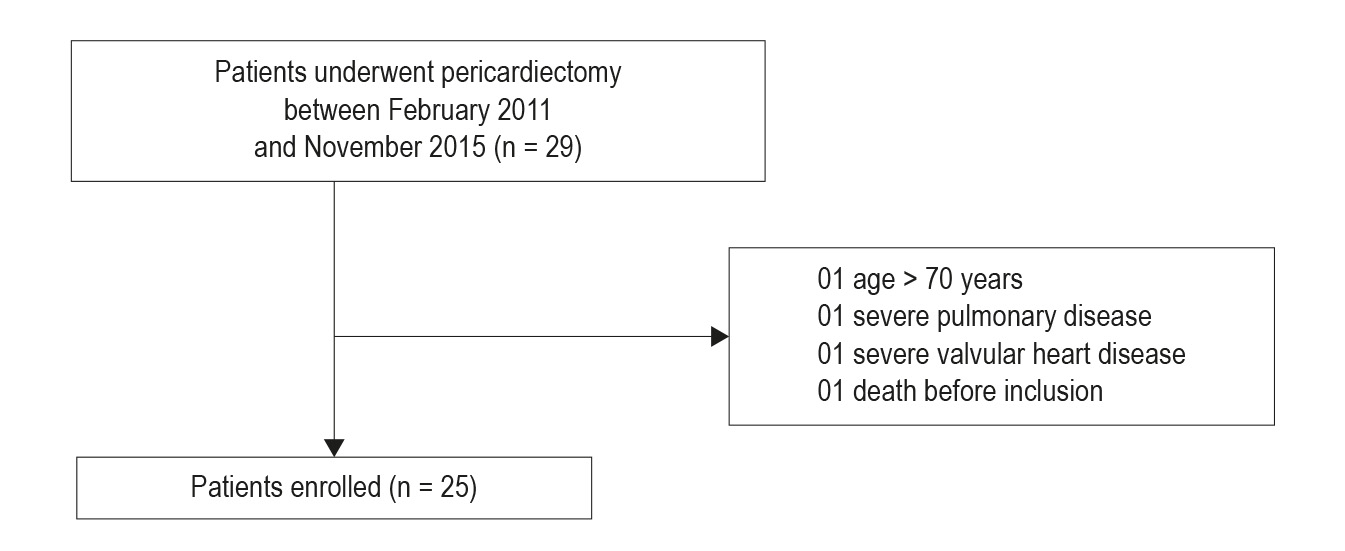Volume 114, Nº 4, April 2020
DOI: https://doi.org/10.36660/abc.20190152
ORIGINAL ARTICLE
Galectin-3 Levels in Patients with Chronic Constrictive Pericarditis
Fábio Fernandes
Dirceu Thiago Pessoa de Melo
Felix José Alvarez Ramires
Ester Cerdeira Sabino
Carlos Henrique Valente Moreira
Luiz Alberto Benvenutti
Viviane Tiemi Hotta
Ana Luiza Carrari Sayegh
Francis Ribeiro de Souza
Ricardo Ribeiro Dias
Charles Mady

Figure 1 – Screening process.
Abstract
Methods: We prospectively evaluated 25 symptomatic patients with CCP referred for pericardiectomy and 21 healthy controls. Patients underwent clinical assessment, Gal-3 and B-type natriuretic peptide (BNP) measurements, echocardiography, cardiac magnetic resonance imaging and cardiopulmonary exercise test (CPET) at baseline. Six months after pericardiectomy CPET was repeated. An alpha error < 5% was considered statistically significant, with a confidence interval of 95%.
Results: Twenty-five patients with a median age of 45 years were included. Etiology was mainly idiopathic (n = 19, 76%); and 14 (56%) patients had NYHA functional class III/IV. Median BNP and Gal-3 were 143 (89-209) pg/dL and 14.8 (9.7‑17.2) ng/mL, respectively. Gal-3 levels were not significantly higher in CCP patients than in control (p = 0.22). There were no significant correlations of Gal-3 with BNP, echocardiographic and cardiac magnetic resonance measures and histological findings. After pericardiectomy, it was found a statistically significant correlation between Gal-3 and the CPTE measures test duration (r = –0.79; p < 0.001) and exercise time (r = –0.79; p < 0.001).
Conclusions: Patients with CCP had normal levels of Gal-3 as compared to the controls. Gal-3 did not correlate with morphological and functional measures before pericardiectomy. However, the associations between Gal-3 and exercise intolerance after pericardiectomy may suggest a role of Gal-3 in prognosis prediction after pericardiectomy. (Arq Bras Cardiol. 2020; 114(4):683-689)
Keywords: Pericardite Constrictive/surgery; Galectin 3; Cell Diferentiation; Pericardiectomy/methods; Fibrosis.















